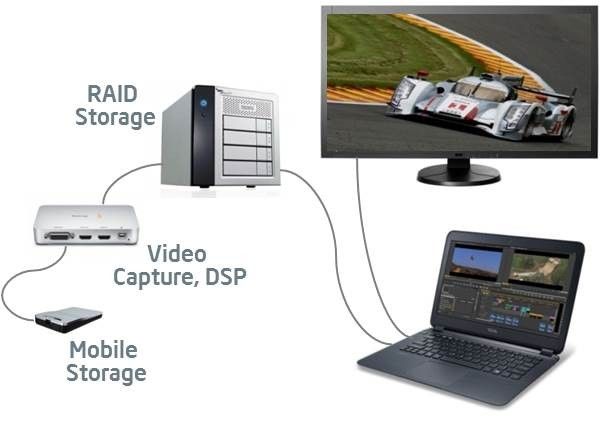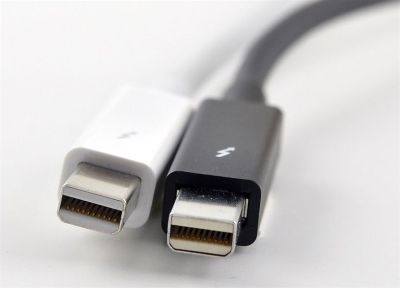The interface now supports twice the bandwidth per channel compared to the first generation Thunderbolt (20 Gb/s versus 10 Gb/s). Improvement, according to Intel's words, is made by combining two independent 10 Gb/s channels into a single bi-directional bandwidth of 20 Gb/s, which support data transfer and display of images on the connected screens.
Higher throughput could be particularly useful in working with the upcoming high definition video standards - Thunderbolt 2 supports simultaneous transmission of 4K video and display of 4K content on the screen. With support for DisplayPort 1.2, Thunderbolt 2 can display 4K resolution video on a single screen or QHD video on two screen
The technology is compatible with existing cables and connectors, and continues to support chaining of multiple devices. Start of production of Thunderbolt 2 controllers is expected later this year, while the mass availability of Thunderbolt 2 devices is expected in 2014.
Tell us what you think in our Forum
News
Thunderbolt 2 Launched at Computex 2013
- Details
- Hits: 2603
 |
Intel has officially unveiled the Thunderbolt 2, the second generation of fast interface for connecting computers with a variety of peripheral devices. Thunderbolt 2 is a more advanced controller codenamed Falcon Ridge, while the cables and connectors remain the same as they were in previous editions.



